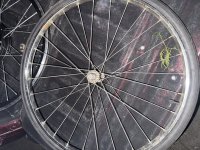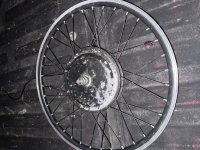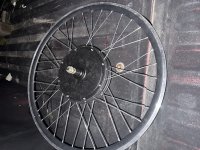Hello! I’ve recently acquired three e-bike conversion motorized hub wheels. Currently, they are outfitted with 26”, very skinny road tire rims. These rims won’t work for my application. The tires need to be a least a good mountain bike width, or even 3” tires would be better.
I’ve never replaced a rim, or laced and trued a wheel, but from what I have read, it is a very doable project. The main issue is there is a lot of specifics that I’m just not familiar with.
Im going to do it. I’ve already decided. It’s just a matter of educating myself.
In addition to the research I’m doing I wanted to see if anyone was familiar with this. In particular, working with the motorized hubs.
Are there any vendors or resources available that will allow you to provide specs such as hub size in order to get a kit with all the needed stuff? For example, it would be great if there was a kit that included the rim, spikes cut to size, etc.
I’ve found one or two, but if anyone knows of any good resources that can help guide me to install a rim on an e-bike motor hub.
Thanks for your time
I’ve never replaced a rim, or laced and trued a wheel, but from what I have read, it is a very doable project. The main issue is there is a lot of specifics that I’m just not familiar with.
Im going to do it. I’ve already decided. It’s just a matter of educating myself.
In addition to the research I’m doing I wanted to see if anyone was familiar with this. In particular, working with the motorized hubs.
Are there any vendors or resources available that will allow you to provide specs such as hub size in order to get a kit with all the needed stuff? For example, it would be great if there was a kit that included the rim, spikes cut to size, etc.
I’ve found one or two, but if anyone knows of any good resources that can help guide me to install a rim on an e-bike motor hub.
Thanks for your time


